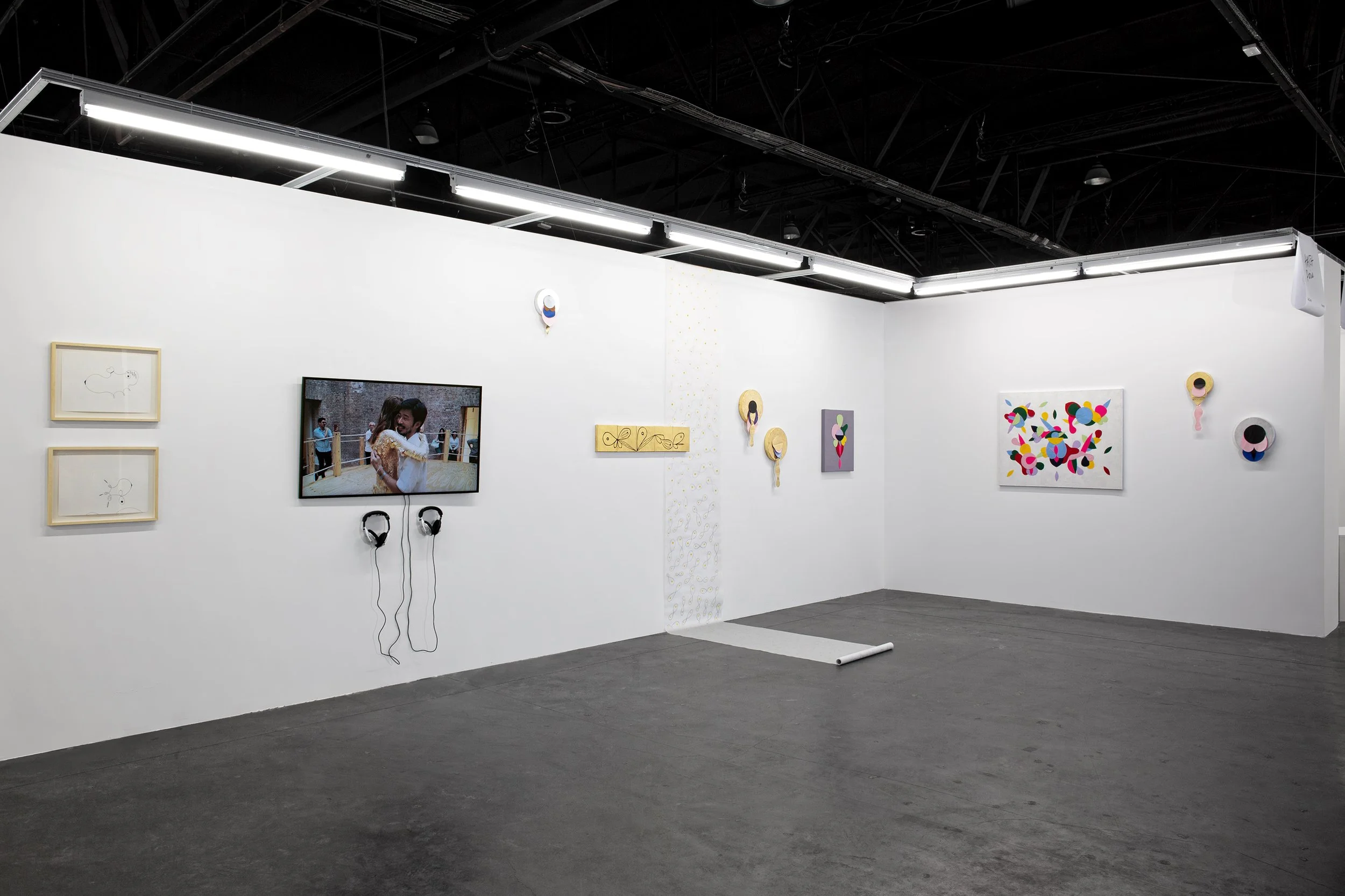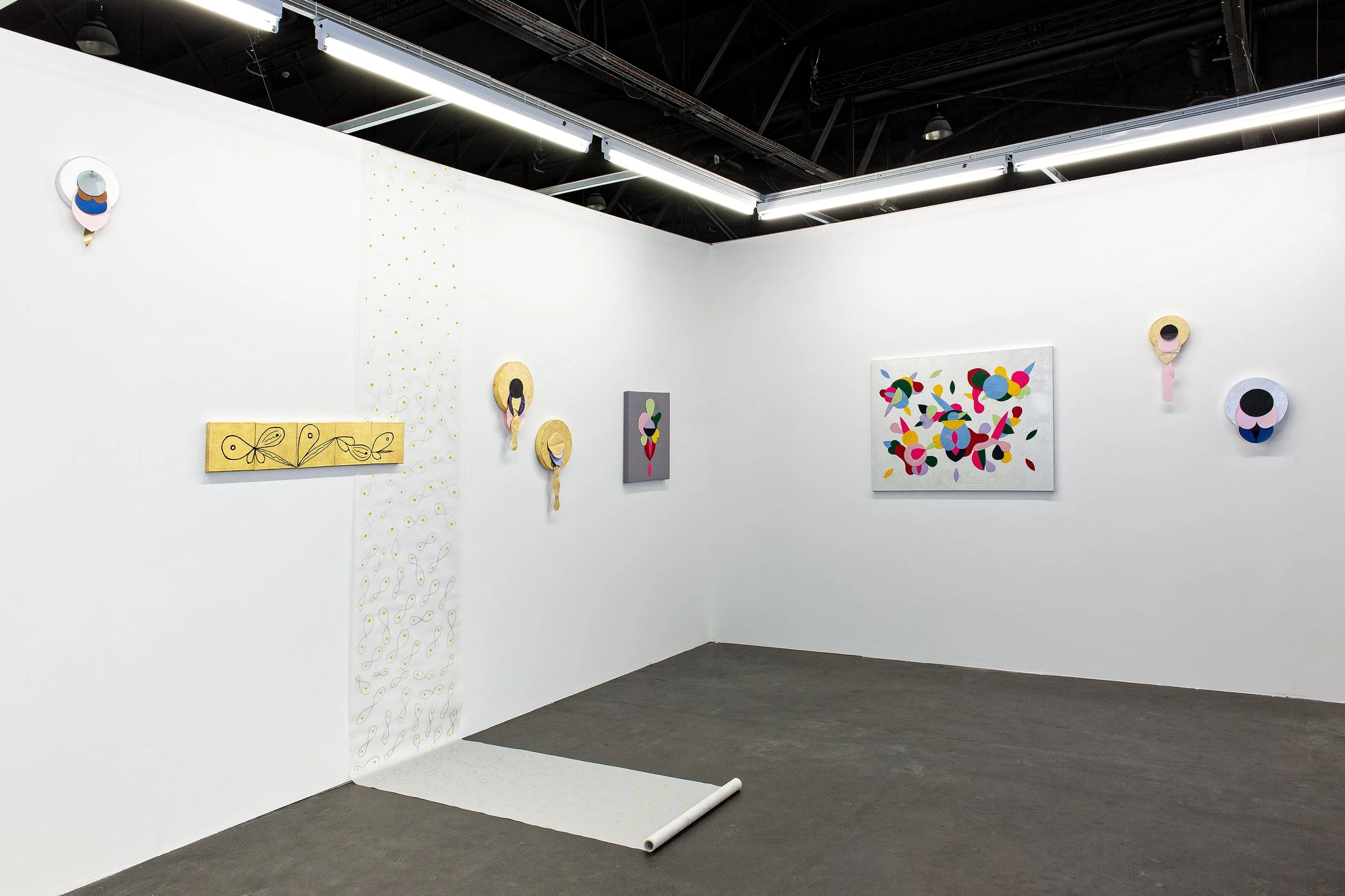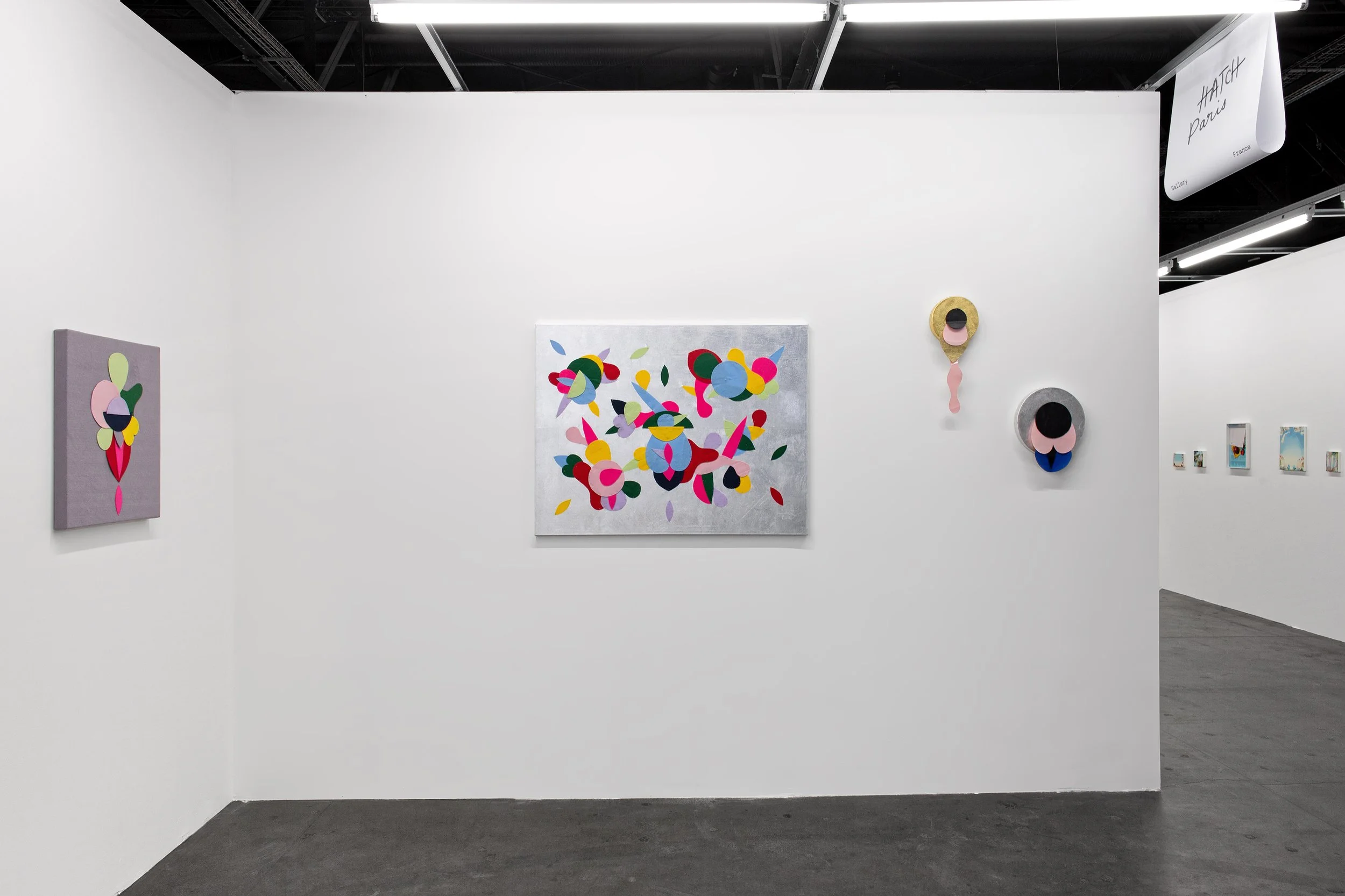Installation view from Élle de Bernardini solo presentation at Art-o-rama Marseille with HATCH, 2024. Photo: Margot Montigny. Courtesy of the artist and Hatch Gallery.
Installation view from Élle de Bernardini solo presentation at Art-o-rama Marseille with HATCH, 2024. Photo: Margot Montigny. Courtesy of the artist and Hatch Gallery.
ART-O-RAMA
Élle de Bernardini
VIP day: August 30, 2024 | 11am - 8pm
August 31 - September 1, 2024 | 2pm - 7pm
Friche la Belle de Mai, Marseille, 13003
Press :
‘The body I live in’
Élle de Bernardini is a Brazilian transgender artist who explores the intersections of gender, sexuality, politics, and identity. Her work highlights the presence of transgender, non-binary, and broader LGBTQI+ bodies within heteronormative societies. After training in classical ballet at the Royal Academy of Dance in London and earning a degree in philosophy, Élle de Bernardini began her artistic career with performances where her body became the primary medium of interaction with the public. The artist cleverly exposes the contradictions and hypocrisy of contemporary societies, which too often perceive these "non-conventional" bodies as abject, indecent, and transgressive, relegating them to a position of subjugation.
Since 2018, de Bernardini has been developing her project Formas Contrasexuais, directly inspired by the Countersexual Manifesto by Spanish philosopher Paul B. Preciado. She creates a new language using five forms/symbols representing five erogenous zones of the human body: the vulva, penis, breasts, scrotum, and anus. Through repeated superimpositions of these erogenous shapes on her canvases, the artist composes abstract works that offer a multitude of possibilities for bodies liberated from all heteronormative binaries, generating fluid identities within each piece. This liberation from heteronormativity is first manifested through the colors she associates with the erogenous forms. By using pink and blue, she dissociates them from their socially predefined genders, while green, yellow, and black support gender neutrality. Purple, on the other hand, symbolizes inclusivity. She combines noble materials like gold and silver leaf with more accessible ones (leather, nylon, faux fur, felt), thus deconstructing social identities and creating new hybrid appearances. These materials represent both human skin and the socially worn clothing of individuals, inviting spectators to question their own uniqueness. The works titled Anomalie further explore the contrasts and superimpositions of colors, revealing a more abstract morphology and dynamic movements reminiscent of a constantly metamorphosing cellular system. De Bernardini emphasizes this term to demonstrate, through scientific research and technological advancements, that all bodies can be considered abnormal. Anomaly is, therefore, not an exception but a general rule reflecting human diversity.
In her series ‘Questions of time’, the artist continues this exploration by associating male and female erogenous forms to create clock pendulums. This series questions the inevitability of aging and bodily change over time. Formas Contrasexuais are, by extension, works in constant mutation, whether through the organic materials used, such as leather, or mineral materials like gold and silver. They naturally evolve over time. For the artist, human beings do not have a fixed identity and can emancipate themselves from a predetermined norm at any moment, undergoing metamorphosis.
The concept of gender as a cultural and historical construct also implies that notions of normal and abnormal are defined by social norms. The binary male/female conception does not include the diversity of identities often perceived as anomalies in a society that privileges gender dichotomy. Through Formas Contrasexuais, the artist deconstructs this existing rigidity to make visible the multitude of gender experiences and encourage the public to engage in critical reflection on the subject.
Courtesy of Luiza Vanelli Schmidt
Élle de Bernardini, DNA #6, 2024, from the series ‘Countrasexual forms’, acrylic and gold leaf on canvas, 100 x 20 cm. Photo: Rafael Salim. Courtesy of the artist and Hatch Gallery.
Élle de Bernardini, Anomalia #0, 2024, from the series ‘Countrasexual forms’, silver leaf, felt and pin on canvas, 116 x 89 cm. Photo: Rafael Salim. Courtesy of the artist and Hatch Gallery.
Élle de Bernardini, DNA #6, 2024, from the series ‘Countrasexual forms’, acrylic and gold leaf on canvas, 100 x 20 cm. Photo: Rafael Salim. Courtesy of the artist and Hatch Gallery.





